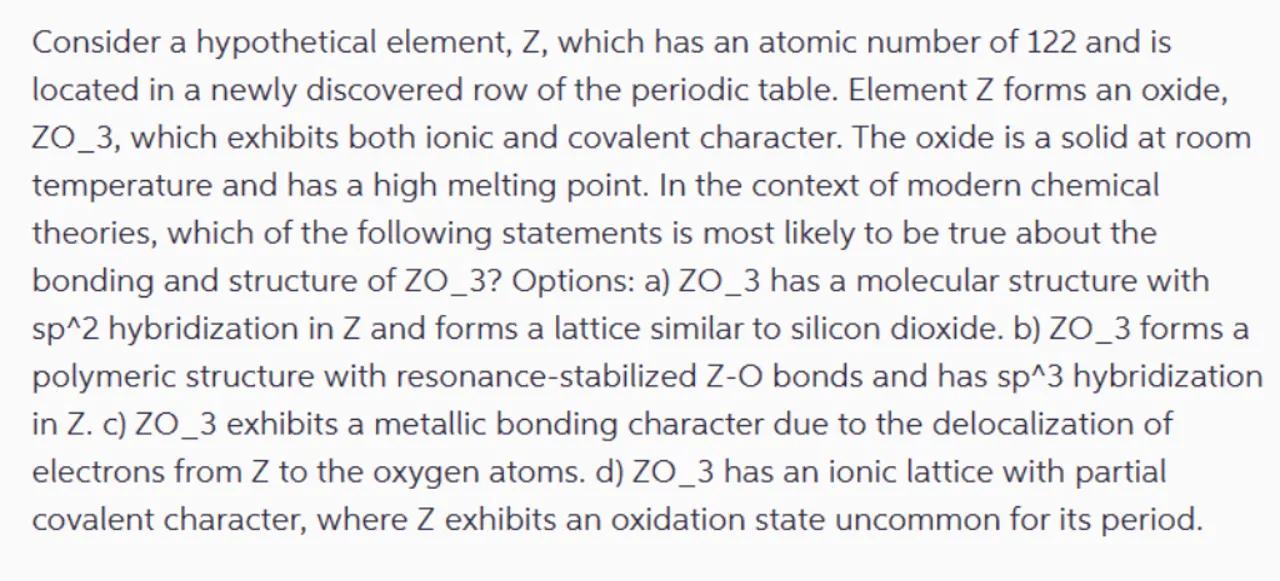
Sia

Question
Chemistry
Posted over 1 year ago
Consider a hypothetical element, Z, which has an atomic number of 122 and is located in a newly discovered row of the periodic table. Element forms an oxide, ZO_3, which exhibits both ionic and covalent character. The oxide is a solid at room temperature and has a high melting point. In the context of modern chemical theories, which of the following statements is most likely to be true about the bonding and structure of ZO_3? Options: a) ZO_3 has a molecular structure with hybridization in and forms a lattice similar to silicon dioxide. b) ZO_3 forms a polymeric structure with resonance-stabilized Z-O bonds and has hybridization in Z. c) ZO_3 exhibits a metallic bonding character due to the delocalization of electrons from to the oxygen atoms. d) ZO_3 has an ionic lattice with partial covalent character, where exhibits an oxidation state uncommon for its period.

Answer from Sia
Posted over 1 year ago
B
Key Concept
Hybridization and Polymeric Structure
Explanation
Given the high atomic number of Z (122), it is likely to have access to d and f orbitals, allowing for expanded octets and multiple bonding scenarios. The description of ZO_3 suggests a polymeric structure with resonance stabilization, which is consistent with hybridization in Z, as this allows for tetrahedral coordination and resonance in structures similar to phosphates or sulfates.
Not the question you are looking for? Ask here!
Enter question by text
Enter question by image
Unlock Smarter Learning with AskSia Super!
Join Super, our all-in-one AI solution that can greatly improve your learning efficiency.
30% higher accuracy than GPT-4o
Entire learning journey support
The most student-friendly features
Study Other Question